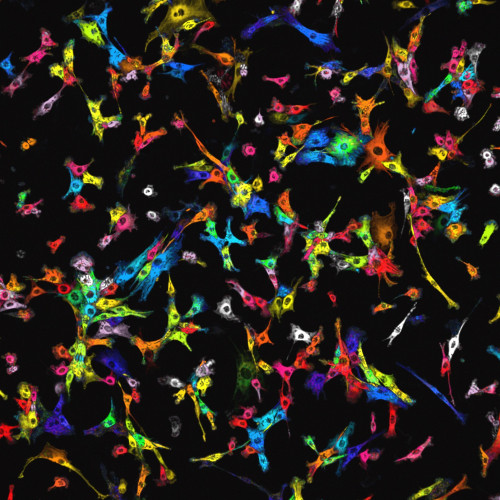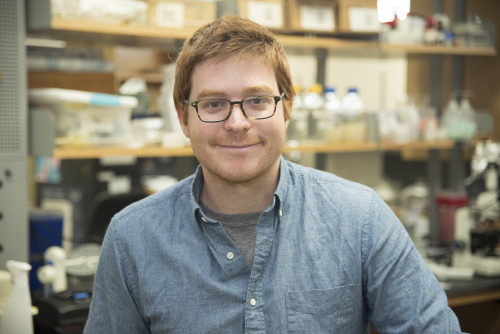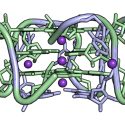Breaking through the noise of cellular signaling

Individual cancer cells are color-coded based on their signaling activity using a novel circuit technology developed in the Coyle Lab. Image taken by Rohith Rajasekaran
You’re in a room, and everyone is talking at the same time. It’s loud and chaotic. You hear many voices, and while you occasionally pick out a word, for the most part it’s all noise. You can’t identify where each voice is coming from or who it belongs to, let alone understand a conversation.
This is how Scott Coyle, assistant professor in the Department of Biochemistry, describes what it’s like for scientists to try and pinpoint the location, direction and intensity of signals being sent by individual cells in a multicellular system.
But isolating the signals of individual cells is exactly what Coyle is working to do.
“When we’re trying to see what’s happening in a cell in real time, we typically use reporter molecules that glow in response to activities of interest happening inside the cell. This includes tracking where a protein is moving, looking to see where a signal is brightest to identify differences in protein synthesis, things like that,” explains Coyle.

Scott Coyle
This method has significant limitations, though. When molecules in many cells are glowing in close proximity to one another, it can be difficult to determine the individual cells responsible for the activity, Coyle explains.
His progress towards developing tools that allow scientists to pinpoint individual cell activity has earned him a 2023 National Institutes of Health (NIH) Director’s New Innovator Award. The $1.5 million award supports exceptionally creative early career investigators embarking on innovative, high-impact projects.
Researchers in Coyle’s lab use synthetic biology to design protein circuits — networks of proteins that interact to induce a new function in a cell. These circuits can be designed to help scientists understand cellular processes by emitting structured data about cellular form and function that is comparatively easy to measure and analyze.
Coyle’s work aims to broaden the ways researchers are able to ask questions about the dynamic patterns of biochemical activity that cells coordinate. Those patterns impact the development, growth, and health of cells.
The tool Coyle has developed allows researchers to tag individual cells with a protein that emits unique, oscillating signals. These signals can be computationally analyzed to learn about an individual cell’s shape, location, and signaling activity. Coyle says the tool is analogous to an FM radio dial, with each cell transmitting data on its own radio signal.
“When you turn on a radio, you don’t hear anything until you lock into a specific frequency,” says Coyle. “This works similarly — we can lock into a cell’s specific frequency. The signals can be isolated from each other so you only hear what you want to hear. This gives us an innovative way to unambiguously assign activity data to individual cells in a multicellular system.”
The result is a series of dazzling, brightly colored images (reminiscent of a dorm room poster to the untrained eye) representing a spatial and temporal snapshot of cellular activity and communication, produced by color codes that are assigned to different cell types.
With the NIH funding, Coyle will apply these tools to explore dynamics of cellular signaling pathways in tumors. Many cancers are the result of corrupted signaling pathways, and a more nuanced understanding of those pathway disruptions may be a key step in developing targeted treatments.
The prestigious NIH award will also allow Coyle to expand his lab by hiring scientists and acquiring the equipment necessary to continue testing and fine tuning his new technology.
“This technology could define a new paradigm for how we visualize and manipulate living cells,” says Coyle. “Biological systems are dynamic, and we need tools that will allow us to explore how cells behave in a biological context.”
Tags: biochemistry


